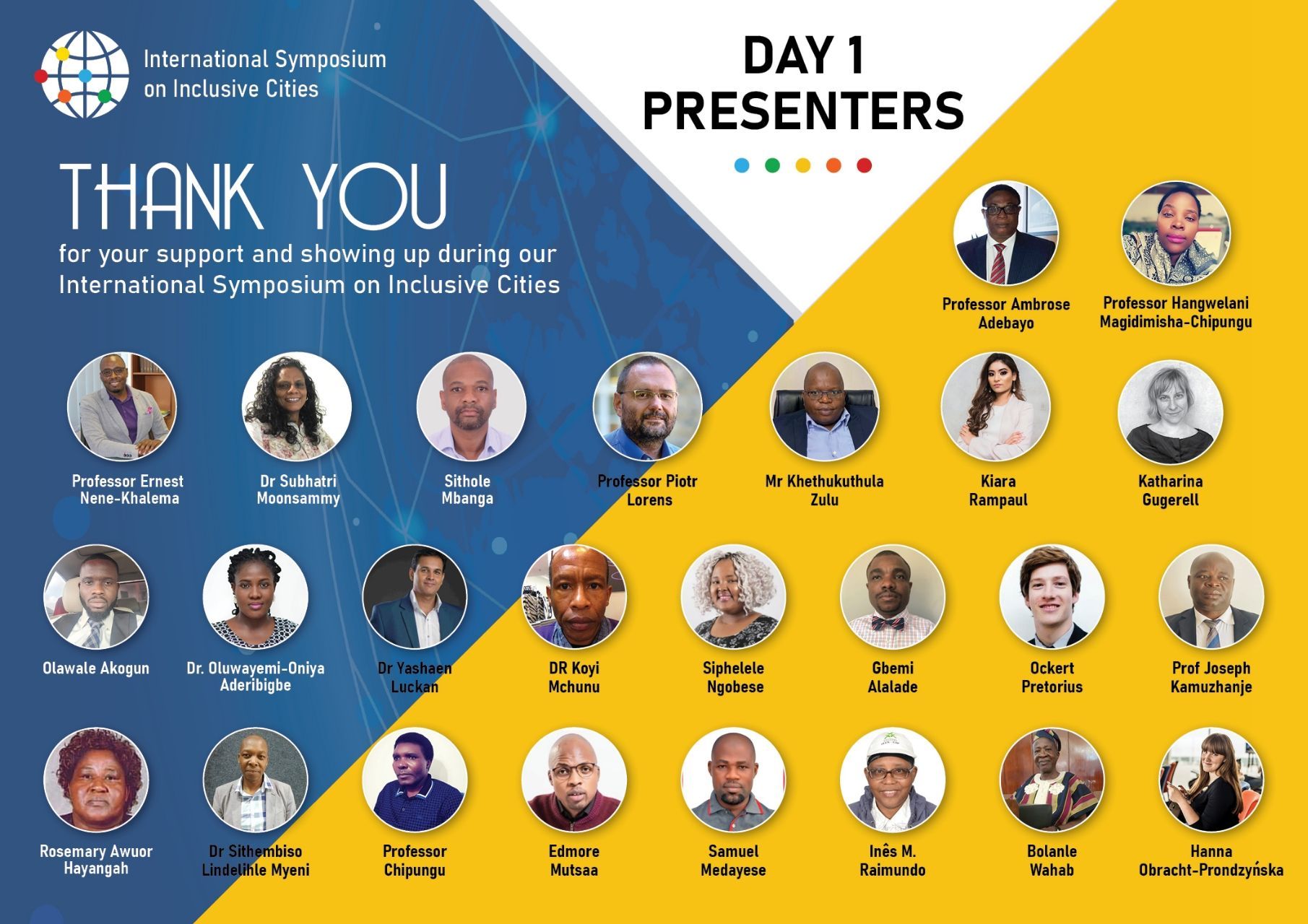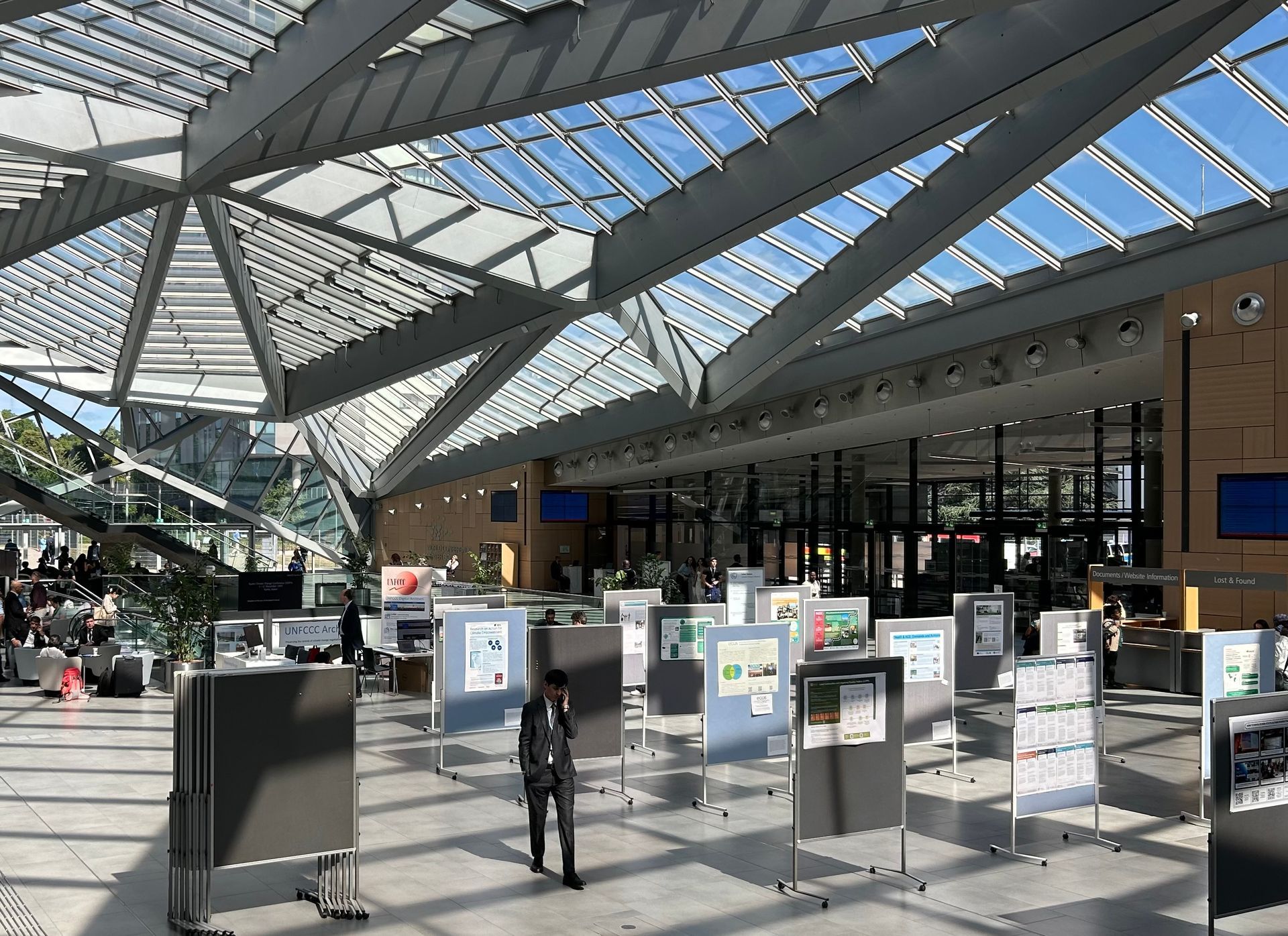Inclusive Cities Leaving No One Behind - Neither a Myth nor a Reality but Work in Progress
Inclusive Cities Through a Multidisciplinary Approach
Inclusive cities which leave no one behind are not a reality but they are also not simply a myth. Instead, they are work in progress. To be inclusive for all citizens this is a goal cities all around the world are striving for but it is unlikely that being an inclusive city would be a goal a city may achieve once and forever. There will be always new challenges and opportunities that emerge. Therefore, the term inclusive cities should indicate more a process towards inclusiveness as a long term goal than describing a status secured.
For three days in June 2021 participants from South Africa, the Global South and with support from European experts discussed options to build inclusive cities. Organizers had picked a multidisciplinary approach which was reflected by the thematic areas of the event:
- Urban Integrated Transport Systems: Towards efficient, affordable, accessible and secure public transport for all,
- Twinning Urban Environmental Sustainability and Climate Change: Towards clean, healthy and secure cities for all,
- Inclusive urban designs and the Covid-19 pandemic,
- Rural-urban interdependencies and linkages for inclusive cities,
- Inclusive cities – Focus on vulnerable group (women and Children, people living with disabilities, migrants and the urban poor), and
- Inclusive cities and affordable housing.
A multidisciplinary, multi-level and truly comprehensive approach is required
Presentations and discussions at the symposium, its panels and breakout rooms often had the character of a search for a common understanding on what is to be understood by a truly inclusive city and what needs to be done to move closer to the goal. To not get lost in complexity presenters and discussants tended to anchor their contribution on one or two policy areas and explored from there how to embrace the bigger challenge of inclusive cities.
Piotr Lorens began the search during his keynote at the opening panel. His anchor subject was social housing but the full title already demonstrated that social housing is not a stand-alone subject: ‘The Need of Social Face of (not only) Social Housing - Focus on Post-Pandemic Challenges’. In parts the keynote provided a to-do-list for inclusive cities. Ambrose Adebayo, chair of the panel and Professor Emeritus, School of Built Environment & Development Studies UKZN recalled the New Urban Agenda of the United Nations which includes the notion of a ‘right to the city’ and a place to dwell as precondition to actively participate in the life of the city.
Peter Bikam of the University of Venda (SA) in his intervention on the second day stated that the issue is not planning but service delivery. With this remark he put the focus on policy implementation which is too often lagging behind the more attractive formulation of new policies. In a similar intention Elizabeth Belpaire stated that the world is failing and that more attention needs to be paid to the health of people and of the planet.
Following these interventions which widened the scope of inclusive cities it was almost natural that some of the following presenters would argue in favor of comprehensive approaches. Puven Akkiah of Ethekwini Municipality expressed the need for long-term goals and perspectives. For him short termism is the enemy of inclusivism. He also said that Sustainable Development Goals and the New Urban Agenda of the United Nations would provide a good framework but that this framework needs to be localized. Nelson Chanza and University of Johannesburg also underscored the need for a comprehensive approach.
The need not only for a multidisciplinary but also a multilevel cooperation and coordination was brought up already on the first day be Subharti Moonsammy, the former Head of the Development Planning, Environment and Management Unit of Ethekwini Municipality. She specifically referred to the District Development Modell in South Africa which still needs to be filled with life but which would help to assure better policy coherence.
Other speakers – including me – presented tools and methodologies for better cross sector and multilevel cooperation leaving no one behind. The local goal of inclusive cities corresponds to the goal of the United Nations' 2030 Agenda to ‘leave no one behind’. Thus, a better coordination between UN, National and local goals could be mutually beneficial and reinforcing. Wrapping up the discussions of the symposium the chair of the Local Organizing Committee Prof Hangwelani Hope Magidimisha-Chipungu added that the dialogue will be continued at future events of the University of KwaZulu-Natal.
Professional, inclusive and fun
Professional, inclusive and fun – that’s how I would describe the symposium “Achieving Inclusive Cities through a multidisciplinary approach”.
The fun part was provoked by surprising incidences like the sudden appearance of the son of Prof Hangwelani Hope Magidimisha-Chipungu on her lap while she was speaking at the plenary on Day 2 of the conference. This added a relaxed and collegial tone to the dialogue and that compensated a bit for the remote character of a Zoom conference without face-to-face meetings.
The event has been organized very professionally and by South African stakeholders only: University of KwaZulu Natal (UKZN), University of Johannesburg, University of Venda, eThekwini Metropolitan Municipality, South African Council of Planners (SACPLAN), and South African Cities Network (SACN). I have attended many conferences in and about Africa in recent years but often International Organizations have a key role as donors and organizers. Not so at this conference.
In addition, it has been endorsed by the International Society of City and Regional Planners (ISOCARP). Members of the ISOCARP global professional association were sprinkled across the programme and certainly contributed to the quality of the conference. However, the ownership for the conference was with experts from South Africa and some other countries of the Global South.
Of course, a lot such conferences are convened in Africa by African national, local and academic institutions every year but it is probably a privilege of the remote working arrangement during the Covid pandemic and the reduced cost for an online conference. It has provided me with this unique opportunity to attend this symposium from my office in Berlin and it has provided the partners from Durban, eThekwini and Johannesburg with the opportunity to convene and international symposium according to own preferences. Therefore, this event may also show a way forward to strengthen African ownership of international dialogues about the future of African cities and Africa in general. It certainly a pleasure for me to attend and support such endeavors.

Synopsis for the Grand Finale Panel of the Symposium
Policies and Governance for Resilient and Sustainable Cities and Regions












